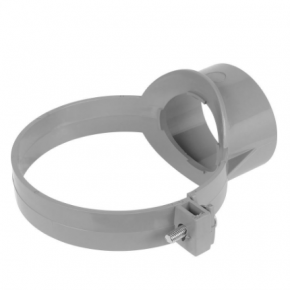
How to Easily Connect New Waste Pipes to your Main Drainage
DIY enthusiasts may wonder how to connect bathroom or kitchen waste pipes up to the mains drainage safely; this guide will discuss the different types of waste pipe available.
This will include how to identify which type it is, plus a few different ways you can connect it up to the soil pipes, which will carry the waste water down into the sewer system.
The property owner is in charge of making sure they have the proper drain connections and a faulty or incorrectly connected system could mean that you are contributing to water pollution or worse.
Things to remember
Sewage should not flow into surface water drains. If your property is on combined drain systems then it requires independent drain connections to collect rainwater and wastewater.
Wastewater originates from:
– Washing machines
– Toilets
– Dishwashers
– Sinks
– Showers and baths
The waste is carried through the home via ‘waste pipes’ which connect to larger ‘soil pipes’ (which are usually located outside of the property) and then carried down into the underground sewer system and finally through to a sewage treatment plant where it will be treated before being released into a watercourse.
Pipe Sizes and Types
If you are planning a new DIY plumbing project in your home, or carrying out some important reparations on a waste or drainage system that is not working as well as it should, chances are that you will need to purchase or replace plastic waste pipes, fittings or connectors.
There are several different types of pipe for toilets, baths, sinks, and basins.
To add some confusion, you’ll find out that there’s more than one system: solvent (glue) weld and push-fit. The pipes for each system are not the same size and therefore aren’t directly compatible.
Common Waste Pipe Sizes
– 21.5mm: for overflows like cisterns.
– 32mm: Found under low volume outlets and small hand basins.
– 40mm: for kitchen sinks and bathroom waste pipe.
– 50mm: Usually found in commercial buildings, but at times seen in residential houses.
– 110mm: For sewer drains and soil pipe.
Compatibility Issues
There are different connection types, and they aren’t all compatible. Some examples are:
– Solvent (glued weld)
– Push Fit
– Compression Fit
Solvent pipes glue together and are not removable. Push fit pipes push together and are sealed using a rubber o-ring, these should pull apart quite easily. Compression fit connections usually use a threaded twist lock connection that must be un-tightened before they can be removed.
Already Confused?
Well, it’s just a matter of identifying the system currently in use. From there, you should be able to source replacement compatible fittings quite easily.
For example if you’ve arrived at the conclusion that the system is a solvent weld system, then it’s just a matter of identifying the diameter size and buying the replacement part.
As a general rule of thumb, you should stick to one system in your home and be consistent throughout.
Compression fittings are the exception to this rule, because they are typically universal and can be used on either solvent pipes (43mm external diameter) or push-fit pipes (40mm external diameter).
As the compression fittings are tightened, they’ll secure the pipes with watertight rubber seals. These fittings are ideal for connecting different pipes together.
The main disadvantage of these fittings is that they’re bulky and costly; therefore, it’s best to go with either push-fit or solvent systems throughout the entire house and be consistent wherever possible.
An Example
In this example DIY project we show you different ways to connect the waste pipe up to the soil pipe stack.
Firstly, run the Waste Pipe through the wall
After determining where the waste pipe will run through the walls, thoroughly check both outside and inside, to make sure there’s nothing obstructing the way, such as cables or other pipework.
It is at times tricky estimating correctly where a pipe opening drilled from the interior wall will exit on the exterior wall so always leave a margin to avoid any problems.
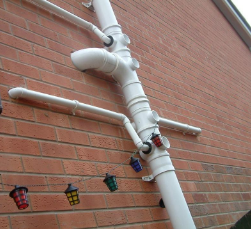
The simplest way to make the hole is to use a drill with a diamond tip. They’re usually available to hire from a local tool hire shop.
An alternative approach would be to trace the circumference of the pipe on the interior wall and drill a set of small holes around it, then use a cold chisel and hammer to remove the centre.
On the inside, the hole can be bigger than necessary, considering that the interior wall can be re-plastered and re-painted afterwards.
On the outside, it can be tidier to take out a brick and then cut and put it back after the pipework is complete.
Next, connect up to the Soil Pipe Stack
Firstly, it is a good idea when connecting the waste pipe into a soil pipe to add an access plug with a removable cover at the other end. This means that in the event of a blockage, there will be an easy way to clear the system again.
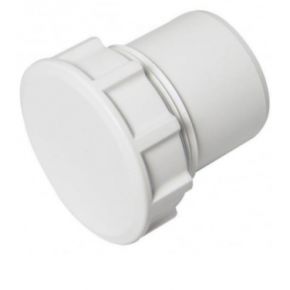
Next, run the waste pipe along the side of the wall, and connect it to one of the boss connections on the soil stack. You’ll need a boss adapter to reduce down from the boss connector size, to the size of your waste pipe.
These should be readily available online at stores like EasyMerchant, or at any good plumbers’ merchant.
In the event that there aren’t any available boss connections already, you can use one of the following methods…
A Strap on Boss
The most simple way to connect a waste pipe to an existing soil pipe is to install a ‘strap on boss’ (pictured at the top of the article) to make a watertight connection.
Simply cut a hole in the soil pipe and place the strap around the exterior of the pipe. Then locate the boss to the cut hole and secure the strap, there are two common types on the market: The easy fix strap on boss, where the ends of the straps just click together and the screwed strap on boss, where the ends of the straps meet and are secured together by a nut and bolt.
Connecting to Soil Pipes using a Short Boss Pipe
Using a short boss pipe is one of the easiest ways to connect waste pipes the soil pipe stack. This fitting fits in along the pipe run and has pre-made boss connections fitted. Once installed you will need a boss adapter to reduce down from the boss connection to the size of the waste pipe required.
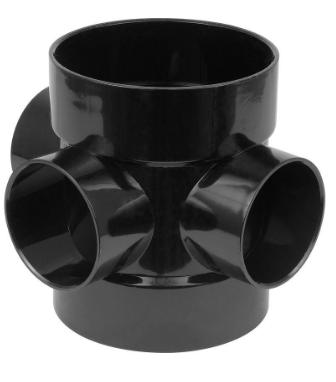
Conclusion
As you’ll see above, once you’ve gotten your head around the different sizes and connection types of waste pipe available, then identifying them and buying replacement parts and connecting up to the soil stack is fairly simple.
If you’re really unsure then it should be a simple job for an experienced plumber and hopefully should not cost significant labor time.
Latest news

14th May 2024
New Technical Committee Chairman At Rooflight Association
Paul Smith, Head of Product and Application Development at Brett Martin Daylight Systems, has been appointed Chair of The Rooflight Association’s influential Technical Committee.
Posted in Articles, Building Associations & Institutes, Building Industry News, Building Products & Structures, Building Services, Facility Management & Building Services, Lighting, Recruitment, Roofs, Windows
10th May 2024
Glidevale Protect strengthens technical service with senior appointment
Glidevale Protect has promoted Jim Smith to head of technical, to continue to drive its programme of product innovation in the development of energy efficient construction and roofing products.
Posted in Articles, Building Industry News, Building Products & Structures, Building Services, Facility Management & Building Services, Insulation, Membranes, Recruitment, Restoration & Refurbishment, Retrofit & Renovation, Roofs, Sustainability & Energy Efficiency, Walls
10th May 2024
Main Stage line-up revealed for Digital Construction Week 2024
With Digital Construction Week (DCW) rapidly approaching, the event organisers have revealed a must-see programme for the Main Stage of this year’s show.
Posted in Articles, Building Industry Events, Building Industry News, Building Products & Structures, Building Services, Exhibitions and Conferences, Information Technology, Innovations & New Products, news, Posts, Seminars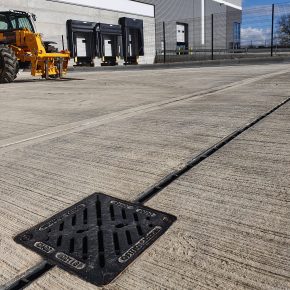
9th May 2024
AWMS: Gatic drainage solutions chosen for ambitious ‘futureproof’ logistics facility
Ascent Logistics Park is a sustainable construction project situated in one of the UK’s newly recognised industry hotspots – Gatic CastSlot and Gatic Kerbdrain from AWMS were specified there.
Posted in Articles, Building Industry News, Building Products & Structures, Building Services, Case Studies, Civil Engineering, Concrete, Cement, Admixtures, Drainage, Drainage Services, Drainage, Guttering, Soffits & Fascias, Facility Management & Building Services, Hard Landscaping & Walkways, Landscaping, Plumbing, Posts, Restoration & Refurbishment, Retrofit & Renovation
 Sign up:
Sign up: